Point of Beginning Mx. Science
This is one of three case studies conducted as part of my research that seeks to explore how ethical knowledge conciliation may come to matter within community-based polar bear research alongside aesthetic action.
This particular case study was informed by the other two cuts of community-based co-creative filmmaking, and the organization of the final BearWatch (pre-)workshops. It diffractively cuts across two events: the final BearWatch (pre-)workshop in Gjoa Haven, and the Annual Science Meeting (ASM), a large conference platform that connects researchers and scientists from across the Circumpolar Arctic. performance-based exploration of how the technicalities of drag may allow for the reconfiguration of what it means to be a community-based researcher.
The aesthetic action that is traced along this cut, is the participatory presence of "Mx. Science".
Nukatugaq - Mx. Science
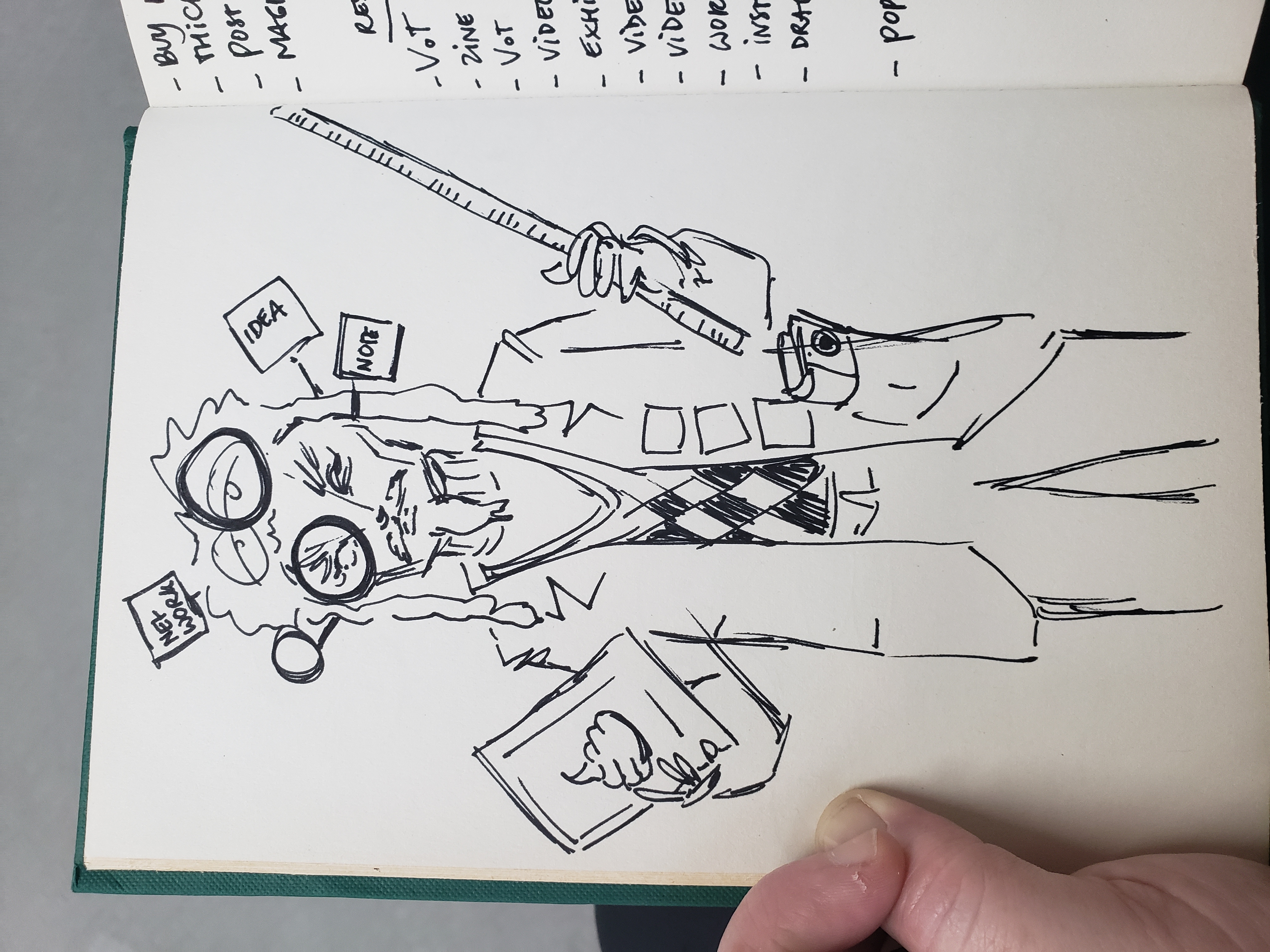
"Mx. Science", is a playful, reconfiguration of (a) scien/ce/tist, performed by me.
Apart from displays of various disciplinary signifiers (wearing a laboratory-coat, and safety glasses, referring to sciences that conduct laboratory experiments, while various lenses and a clipboard for notes signal towards disciplines like anthropology, or geography), Mx. Science is not determinately human (blue-skinned) or cis-gendered (tonal qualities of voice that are dissonant with gendered presentations like facial hair).
As Mx. Science is performed by me, a non-Inuit researcher, conducting research from a western educational institute, as part of the BearWatch team. The performance can therefore not be seen as an intervention - a movement from the outside-in. Neither can it be see as a performance that is fully "inside" the convention of western science. Mx. science is rather as a diffractive event, proposed from the liminal.
By presenting a liminal figure of "the scientist", it becomes possible to query science and scientists themselves as a categorical phenomenon. that includes boundaries and properties. It makes it possible to explore all the im/possible ways of being "different" within the conventional boundaries and properties of these phenomena.
However, I did not want to do so without the explicit sanction of the communities that I was working in.
"Nuqatugaq"
I had first introduced Mx. Science to the school in Coral Harbour, by invitation of the grade four teacher and with permission from the school principle. Mx. Science, being a very colourful and playful character was received positively by the school, students and teachers. Although no formal data was collected, I received informal feedback from the teacher and principle that my presence was very much enjoyed by multiple people in the school, and that inquiries were made about whether I would return again.
After this brief but positive experience in Coral Harbour, I introduced Mx. Science during the second day of the pre-workshop in Gjoa Haven, to discuss its potential and the desirability of introducing a playful element into an important gathering. Again, the persona was very positively received, and the decision was made with sanction from the Gjoa Haven HTA, the BearWatch PI's and the participants of the pre-workshop to host the final gathering as Mx. Science. I was renamed "Nukatugaq" (Inuktitut for Young male polar bear cub) by the pre-workshop participants.
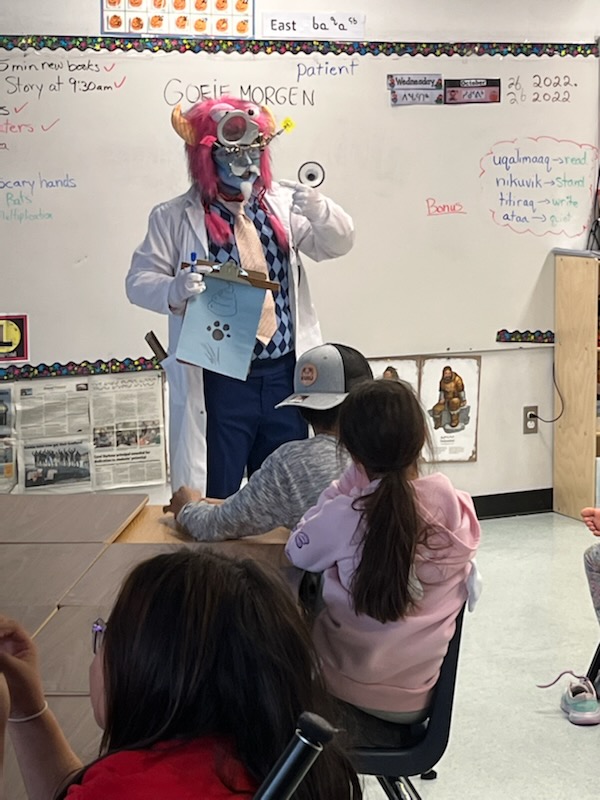
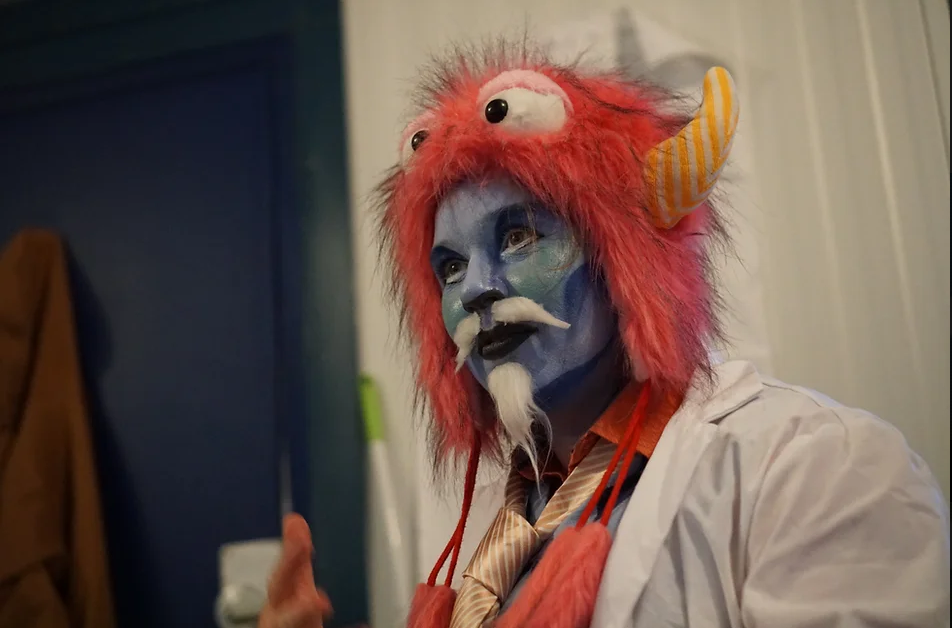
"Mx. Science" invites especially non-indigenous researchers to rethink and reflect on their role and position in our scientific landscape. As a figure that potentially unsettles several norms within the Arctic sciences, Mx. Science holds potential to invoke conversations, and create a liminal space to build new relationships. As a situated performance it is both an exercise in new ways of engaging each other through genuine curiosity, as well as an effective tool to que(e)ry where and when differentiated bodies dis/connect in space.
Keep going, to keep following the cut of the Mx. Science.
Cut 3 "Wayfaring the BW Project"
Queer performance or shapeshifting
Mx. Science draws from my own queer lived experience to question the im/possibilities of working with Inuit people as a non-Inuit researcher. I draw from western drag practices to perform an opening for such conversations.
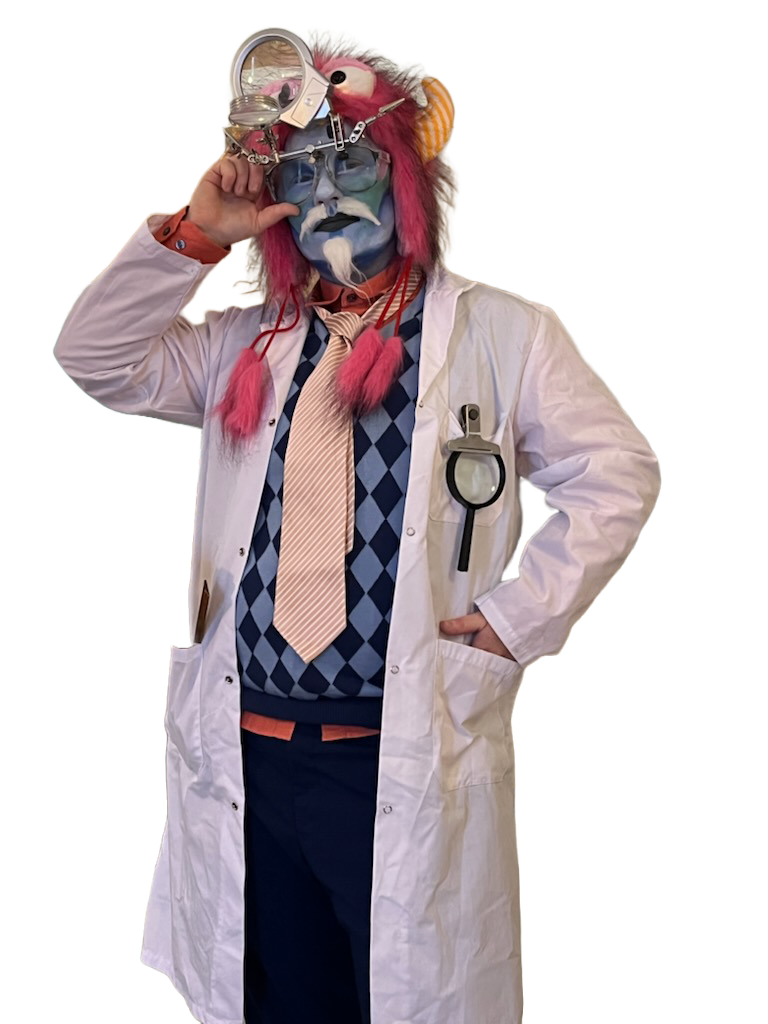
As an ‘AFAB’ (Assigned Female At Birth) performer that explores non-binary, and female masculinities as well as the trans-human body, I am part of a recent global revival of drag’-kings’, ‘-quings’ and ‘-things’. This generation of (club-)performers shapes an avant-garde community that addresses contemporary political issues, while undoing traditional, western categorical understandings of gender, sex and family by queer kinship structures. Such undoing of boundaries, and queering of categories like the ‘natural’ and the ‘human’ has direct connections with the social ecologies of environmental research and management. The Arctic ‘wildernesses’, for example, can be seen as sites for the enactment of a specific hetero masculinity associated with physical strength, roughness, ingenuity, and self-realization (Sandilands & Ericson, 2010). Such sites of enactment (can) extend into the scientific laboratory, reproducing hegemonic masculinities and perpetuating racial and gender inequalities and unequal power relations (MacGregor & Seymour, 2017). Drag has the potential to for example de-naturalize and unsettle such masculinities by embodying its technologies as separable from sex. Such masculinity, as performed through drag then becomes liminal, a place beyond categories – a space of play; ‘the betwixt and between’ through which shape-shifting figures turn things on their heads and pass on their way from one state of being to another (Rosenfeld, 2003). Taking these techniques and applying them not so much on gender, but on western science, its conventions and categories, opens our understanding in similar ways. Drag can thus, shift fixed positions, and transform everyday expectations and habits, that allows us to not only explore what it entails to transform research – but also the researcher.
Annual Scientific Meeting Mx. Science
To better understand the possibilities Mx. Science enables for western scientists to imagine ethical encounter outside of its conventional institutional structures, I had asked and gained permission from the organizers the Annual Scientific Meeting (ASM), also known as the ArticNet Conference in Toronto, in December 2022 - to attend as Mx. Science directly after the final workshops in Nunavut.
I had informed the organizers that I would only be present, and did not require a stage or a timeslot as Mx. Science. The panel that I would have been presenting in had been cancelled last-minute, and the screening of "Voices of Thunder", had happened during the first student days, which I didn't attended as Mx. Science. During the main part of the conference, I attended as Mx. Science, and observed both how I moved through the conference space, as well as how people responded to me. I recorded my conversations with people, and followed up with 15 of them to conduct a follow-up interview.
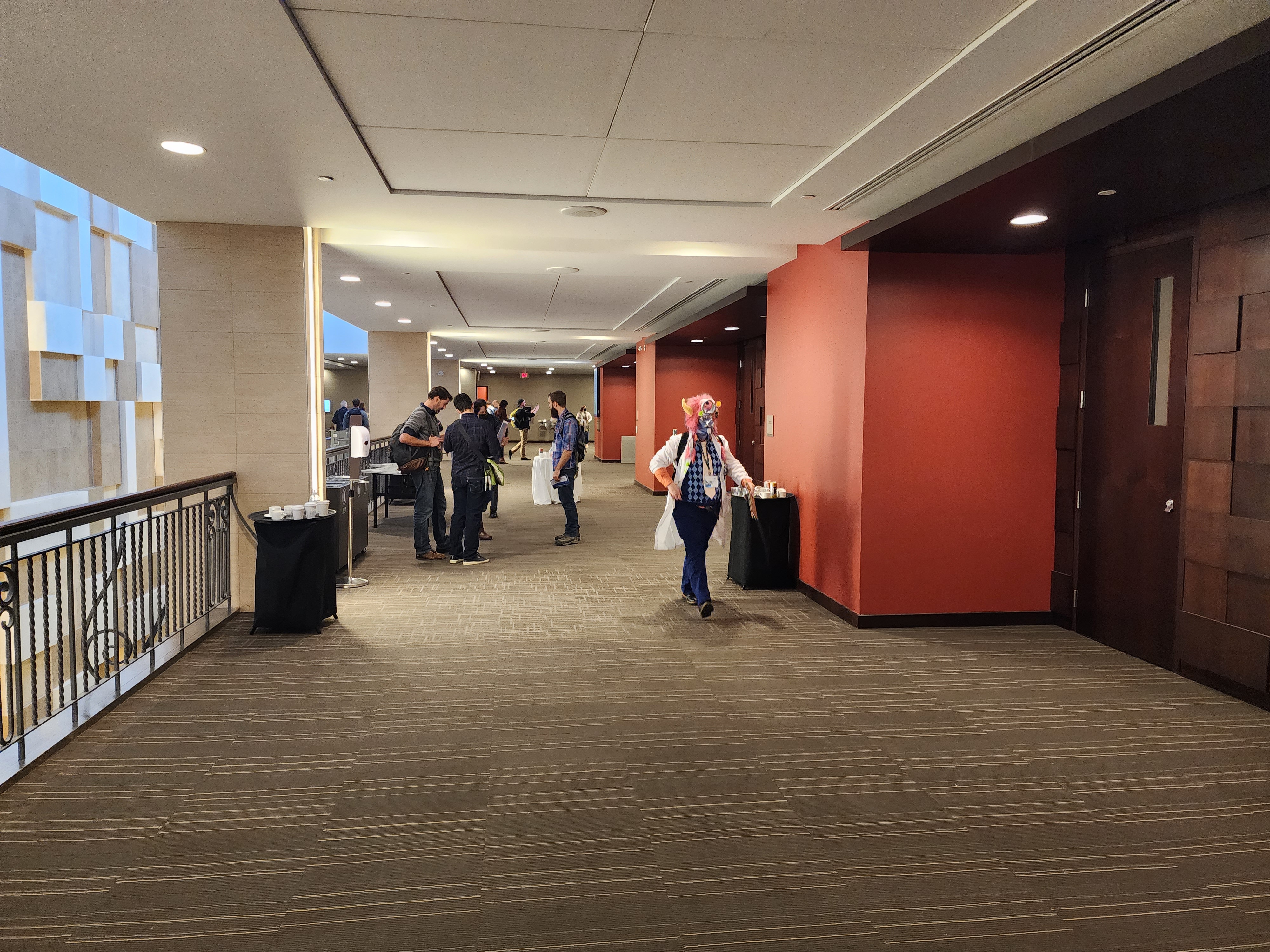
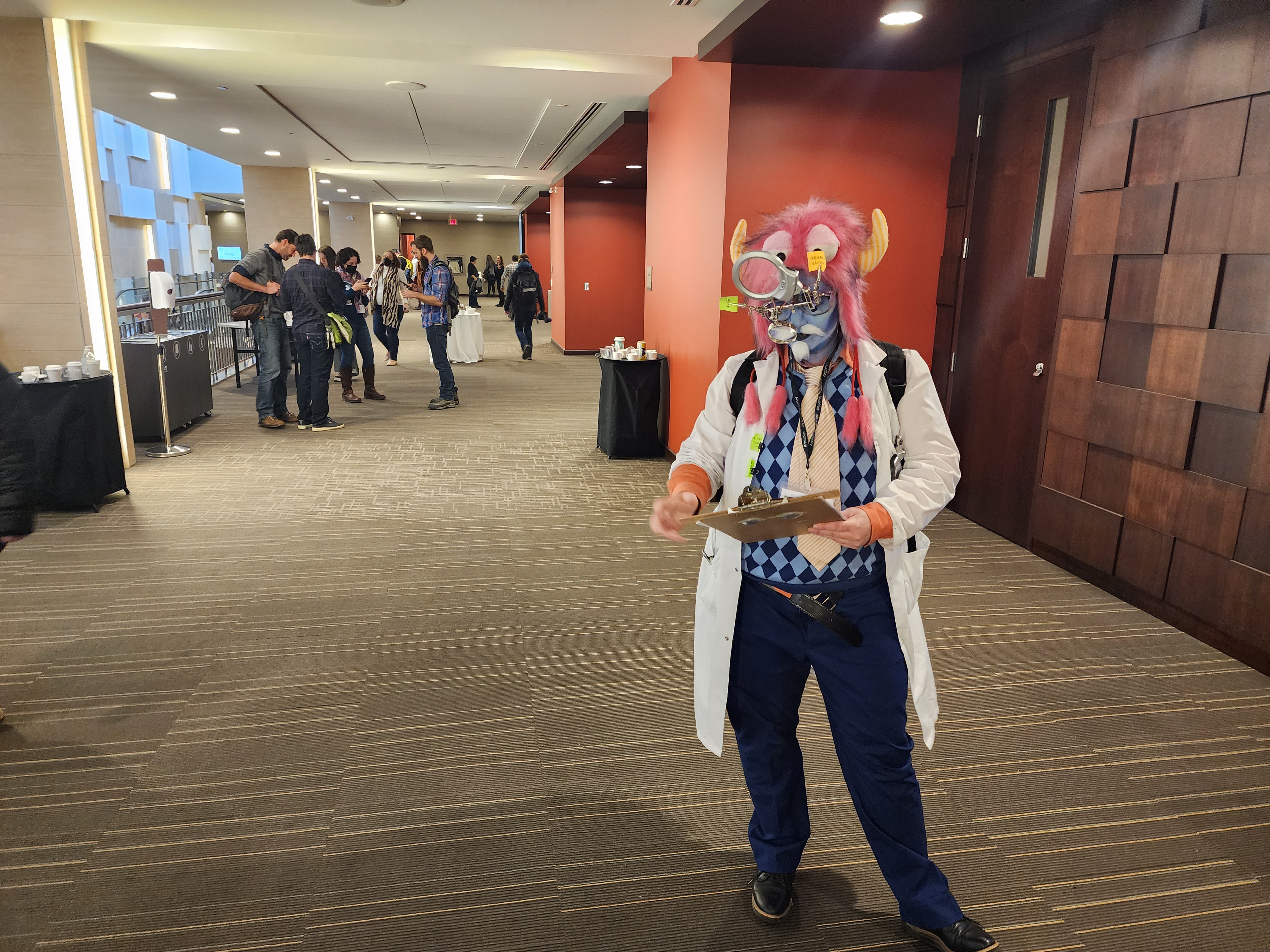
Landmark: "The Great white Beast"
The Liminal as Ethical Space
Several insights emerged from my presence at ASM and the 15 follow-up interviews I conducted.
Firstly, Mx. Science turned out to function as a diffractive device. My follow-up interviews were semi-structured conversations design to explore the materiality and the meaning that could be attributed to my presence at the conference. It became apparent after 15 interviews, however, that the answers to such questions could not be separated from the person who was observing Mx. Science.
What had become clear at the final workshops, at the ASM conference and was also reiterated at the interviews was that most people expected Mx. Science to re-present a clear underlying message about science or scientists. The majority of people who approached me, asked "what" my presence was about. Interestingly enough, very few people asked "why" I was present as Mx. Science.
More insights
Another Point of Beginning
You have reached "Another Point of Beginning". These are not conclusive endings to my research, but rather perform at the cusp of emergence: They are a story so-far. Some of these points mark the end of funding cycles or project activities. Or they mark the limitations and scope of this particular PhD dissertation. Others are trails, and tracks that have faded out, as they remained un-revisited. They however always mark one moment along an ongoing animate line of correspondence between multiple agencies, and they usually allow for continuing with another cut.
This is where we take account for our journey so far. This journey is always partial, and so are the insights we have built on our way. You can trace the path you have taken through this Knowledge-Land-Scape by clicking the "trace" bar in the upper left corner of your screen. It will allow you to account for some of the insights that your journey has given you. The map below shows you the full extent of wayfaring possibilities of the scape.
Beyond the Cut
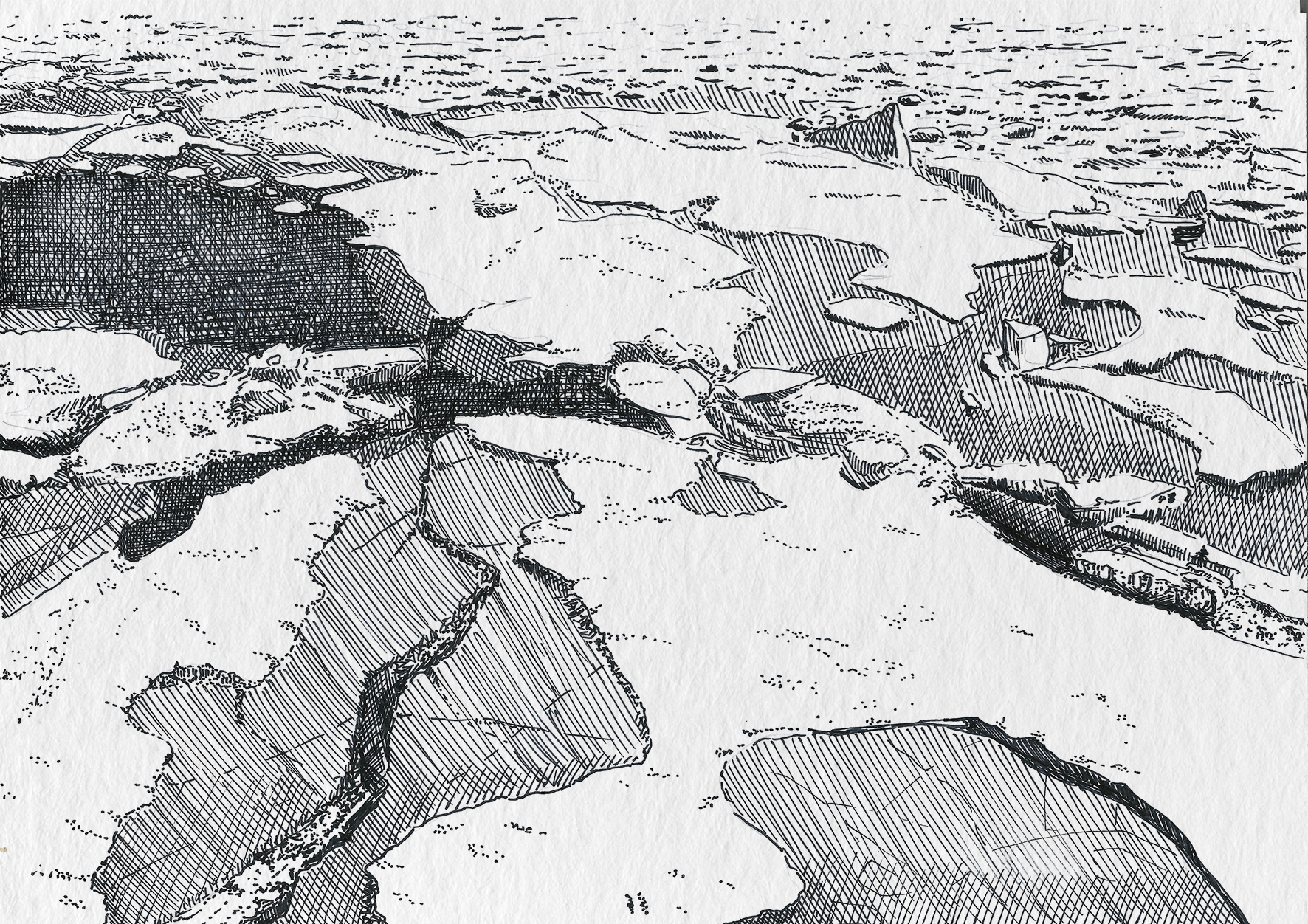
Through my interventions with Mx. Science I have gained an interest in what can be done through self-directed work of un-learning, decentering- and decolonizing the western scientist in cross-cultural contexts. For transformative practices to come to fruition, such un/learning should happen both by accepting leadership and practicing respectful collaboration with non-western partners, as well as through a self-initiated repositioning.
To explore the future possibilities of drag and performance art to decolonize, and unsettle scientific conventions within its own institutional spaces I have organized a workshop at the Descartes Institute of Science and Technology Studies at Utrecht University in 2024. In April 2025 I will start an eight month fellowship with the Arctic Governance Research Group of the RIFS Institute in Potsdam to explore the diffractive possibilities Mx. Science offers within the scientific institute.
